Production process
The production process of sodium pyrosulfite includes dry process and wet process [3].
(1) dry method. The soda ash and water are stirred evenly according to a certain molar ratio. When na2co3.nh2o is formed as a block, it is put into the reactor, and a certain gap is kept between the block and the block, then SO2 is introduced until the end of the reaction, the block is taken out, and the finished product is obtained by crushing.
(2) wet method. In the sodium bisulfite solution, add a certain amount of soda ash to make it form a suspension of sodium bisulfite, and then pass it into SO 2, that is to say, the crystal of sodium pyrosulfite is formed, and the finished product is obtained by centrifugation and drying.
Project wet dry method
Production process: high mechanical strength; cumbersome process
Product quality high purity bottom
Low raw material consumption
higher
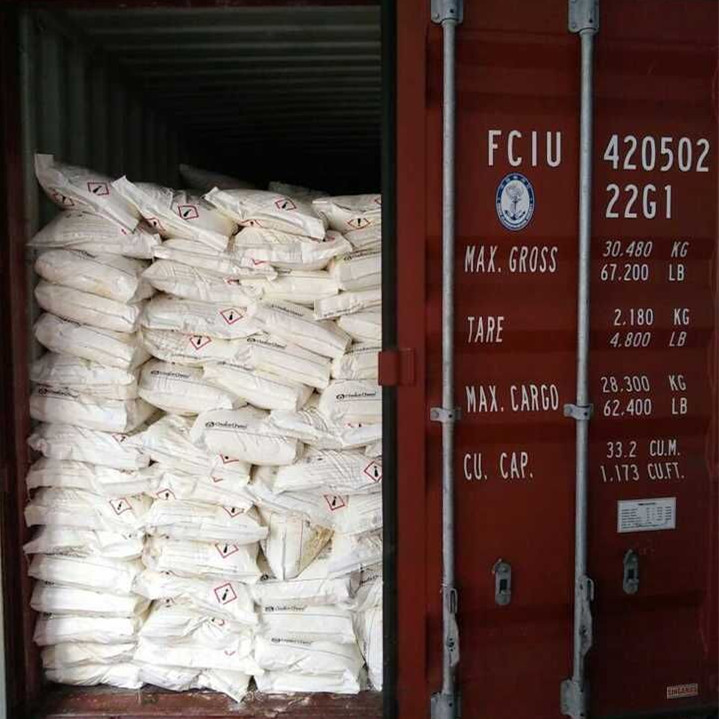
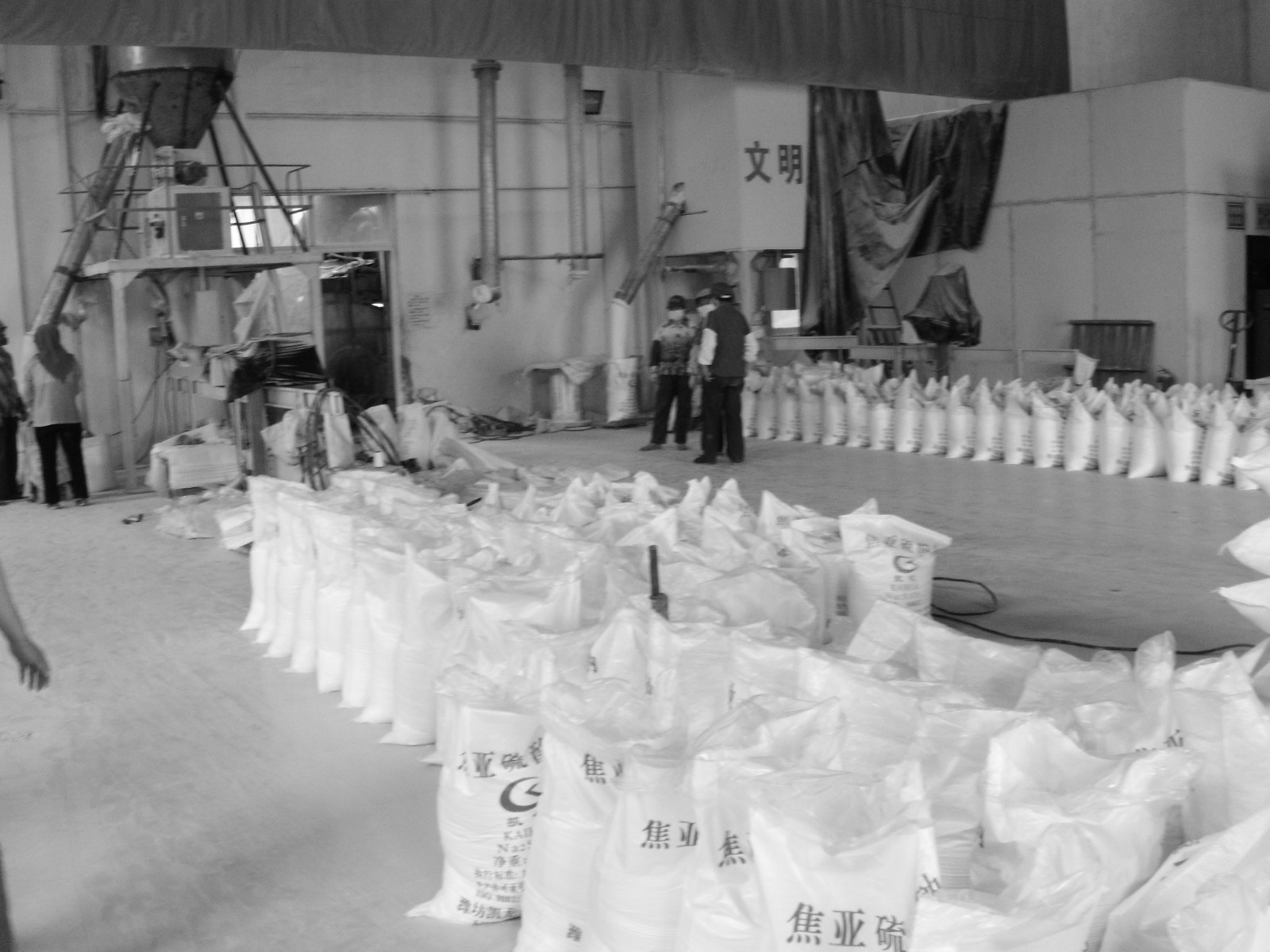
1. Principle of wet production
The reaction process for the production of sodium pyrosulfite by this method is divided into four steps: [4]
(1) SO2 is introduced into the sodium carbonate solution to pH 4.1 to form sodium bisulfite solution. The reaction formula is as follows:
Na 2CO 3 +2SO 2 +H 2O——2NaHSO 3 +CO 2
(2) sodium bicarbonate is added to sodium bisulfite solution to adjust pH to 7-8, which is converted to sodium bisulfite, and the reaction formula is as follows:
Na 2CO 3 + 2NaHSO 3——2Na 2SO 3 + CO 2+ H2O
(3) sodium sulfite reacts with SO2 until pH reaches 4.1, and then generates sodium bisulfite solution. The reaction formula is as follows:
Na 2SO 3+ SO 2 + H 2O——2NaHSO 3
(4) when the content of sodium sulfite in the solution reaches the supersaturated concentration, sodium pyrosulfite will be precipitated and crystallized. The reaction formula is as follows:
2 NaHSO 3——Na 2S 2O 5 + H 2O
The total reaction formula of the four steps is as follows:
Na 2CO 3+2SO 2——Na 2S 2O 5 +CO 2
However, if the reaction conditions are not appropriate, the following side effects may also occur:
2 Na 2CO 3 + 3So 2 -- Na 2S 2O 5 + Na 2SO 3 x 2CO 2
2. Traditional wet process with sulfur as raw material
First, the sulfur is crushed into powder, then compressed air is sent to the combustion furnace for combustion at 600-800 ℃. The amount of air added is about 2 times of the theoretical amount, and the concentration of SO 2 is 10-13. After cooling, dedusting and filtering, sublimated sulfur and other impurities are removed, and the gas temperature is reduced to about 0 ℃, and then it is sent to the series reactor
Slowly add mother liquor and sodium carbonate solution to the third reactor for neutralization reaction, and the reaction formula is as follows:
2NaHSO 4+ Na 2CO 3— 2 Na 2SO 4+ CO 2+ H 2O
The generated sodium sulfite suspension is successively passed through the second stage and the first stage reactors to absorb and react with so 2 to form sodium pyrosulfite crystal.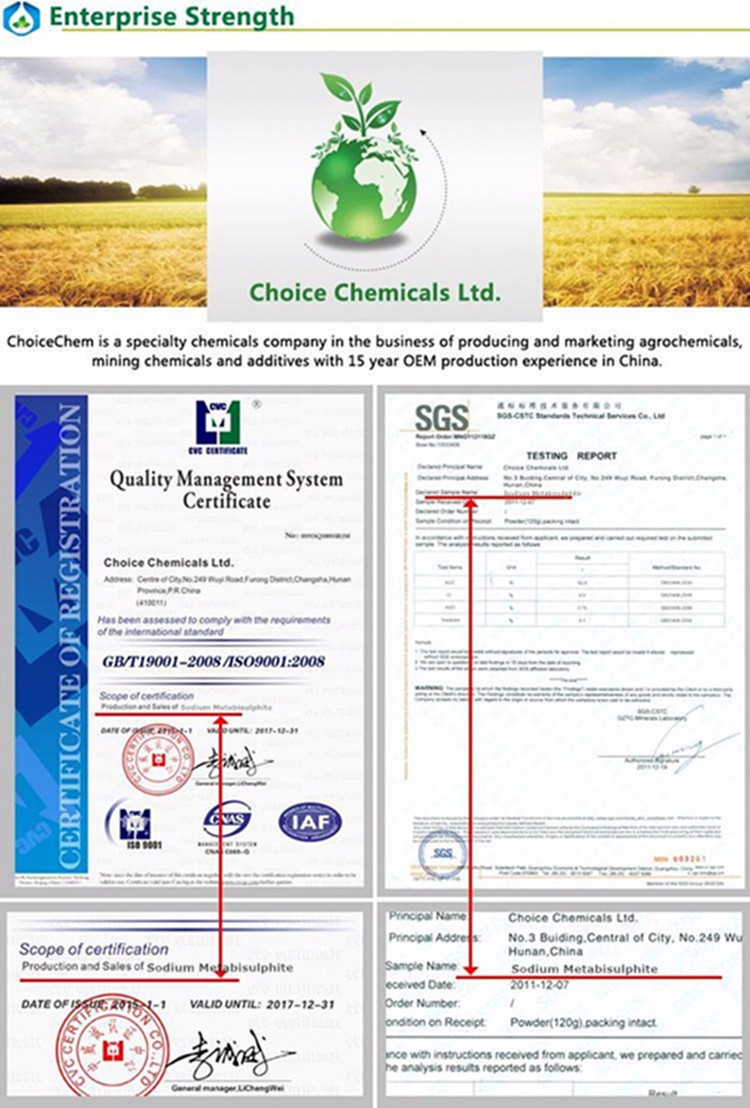
problem
Main hazards
Health hazard: the product has obvious stimulating effect on skin and mucous membrane, and can cause conjunctivitis and bronchitis. People with allergic constitution or asthma are very sensitive to this, and direct skin contact can cause burns.
Explosion hazard: the product is nonflammable, toxic and irritant.








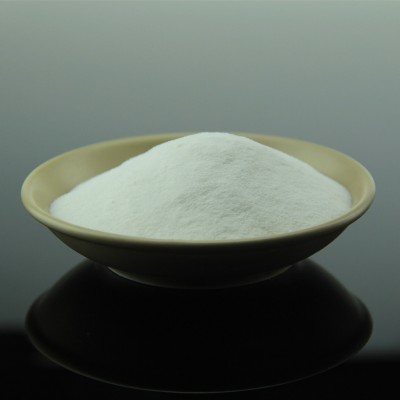

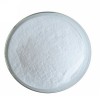
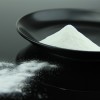
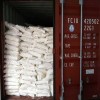



 Product quality protection
Product quality protection 







